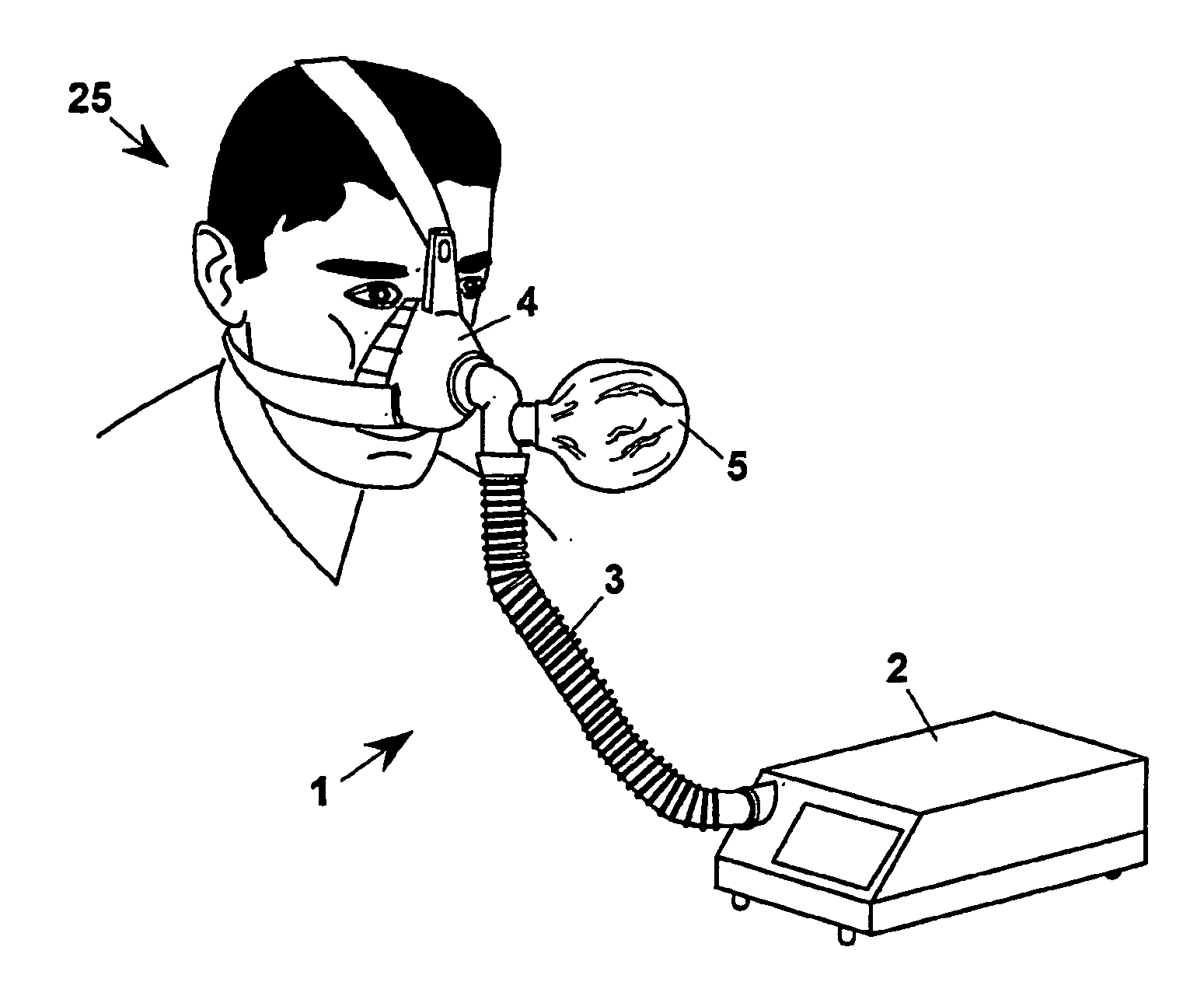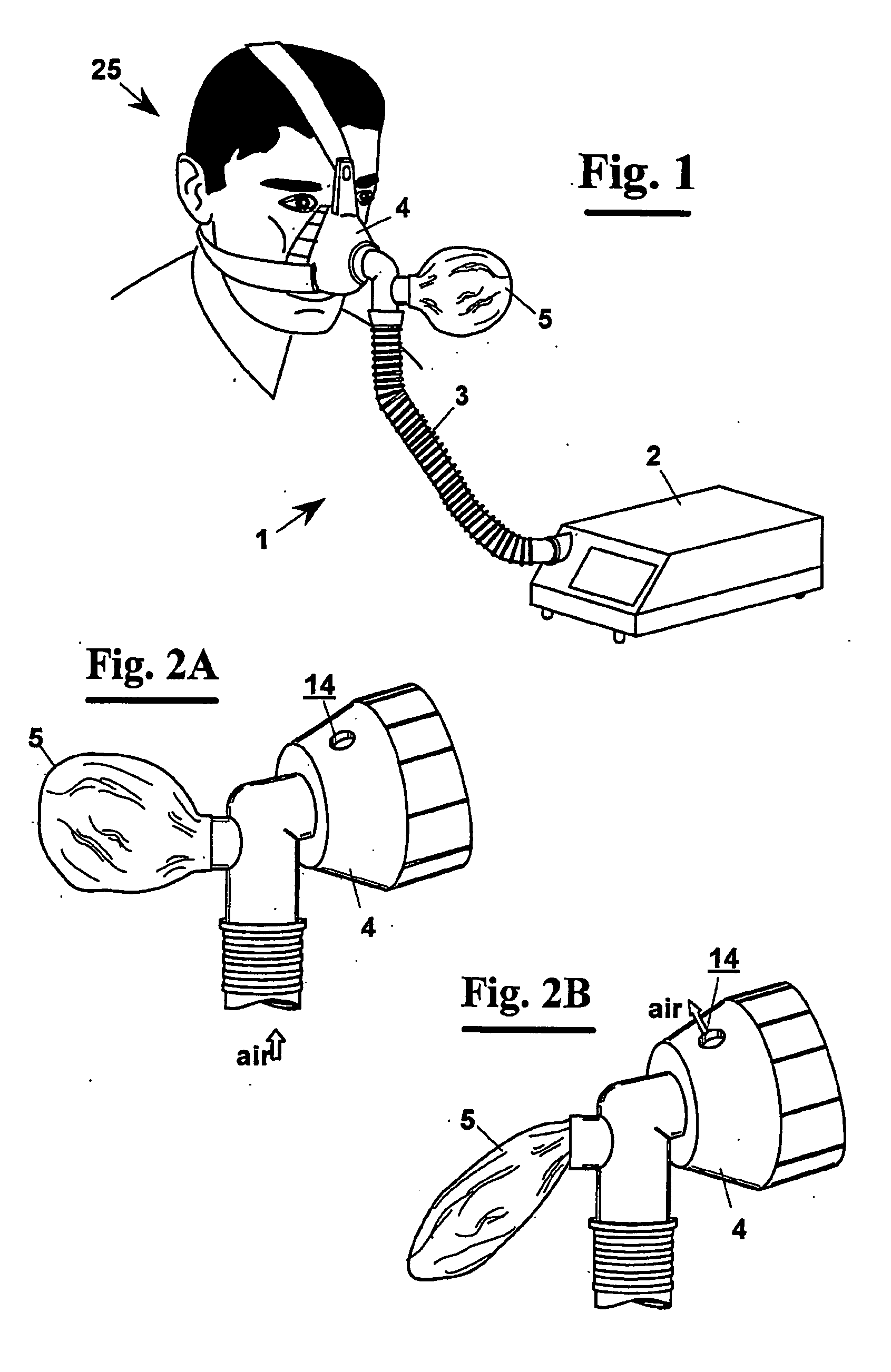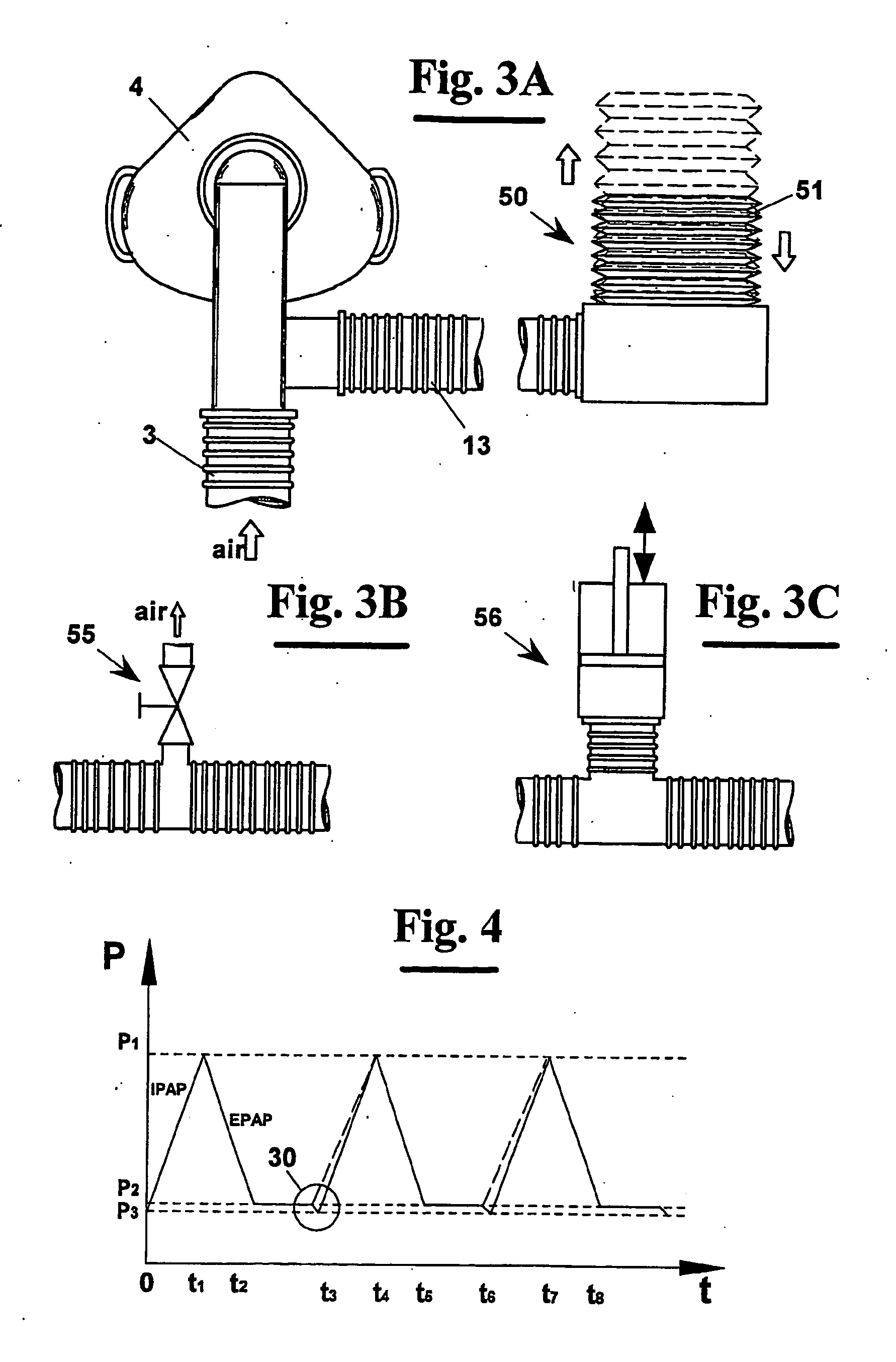Apparatus for non-invasive mechanical ventilation
a technology for mechanical ventilation and apparatus, applied in respirators, respirators, life-saving devices, etc., can solve the problems of affecting the correct operation of the respiratory system, unable to meet the peculiar needs of individuals, and said profiles that cannot meet individual needs, so as to reduce the duration of the treatment of the fan and increase the amount of gas exchange
- Summary
- Abstract
- Description
- Claims
- Application Information
AI Technical Summary
Benefits of technology
Problems solved by technology
Method used
Image
Examples
Embodiment Construction
[0023] In FIG. 1 a first exemplary embodiment is shown of a non-invasive mechanical ventilation apparatus 1, according to the present invention. It comprises a fan 2 for generating an air flow according to a predetermined pressures cycle, consisting of a succession of inspiration steps, or IPAP, and exhalation steps, or EPAP. The air flow generated by fan 2 is conveyed into the aerial ducts of a patient 25 by a flexible tube 3 connected to a nasal mask 4 worn by patient 25. The main feature of the non-invasive mechanical ventilation apparatus 1, according to the invention, is to provide a flexible air reservoir 5 arranged pneumatically connected to duct 3 and nasal mask 4, in order to subtract from the inspiration flow a certain air amount before that it reaches the aerial ducts of patient 25.
[0024] In particular, at the beginning of an IPAP step a certain air amount of the flow generated by fan 2 enters reservoir 5, for example a “balloon” of flexible material, preventing said air...
PUM
 Login to View More
Login to View More Abstract
Description
Claims
Application Information
 Login to View More
Login to View More - R&D
- Intellectual Property
- Life Sciences
- Materials
- Tech Scout
- Unparalleled Data Quality
- Higher Quality Content
- 60% Fewer Hallucinations
Browse by: Latest US Patents, China's latest patents, Technical Efficacy Thesaurus, Application Domain, Technology Topic, Popular Technical Reports.
© 2025 PatSnap. All rights reserved.Legal|Privacy policy|Modern Slavery Act Transparency Statement|Sitemap|About US| Contact US: help@patsnap.com



